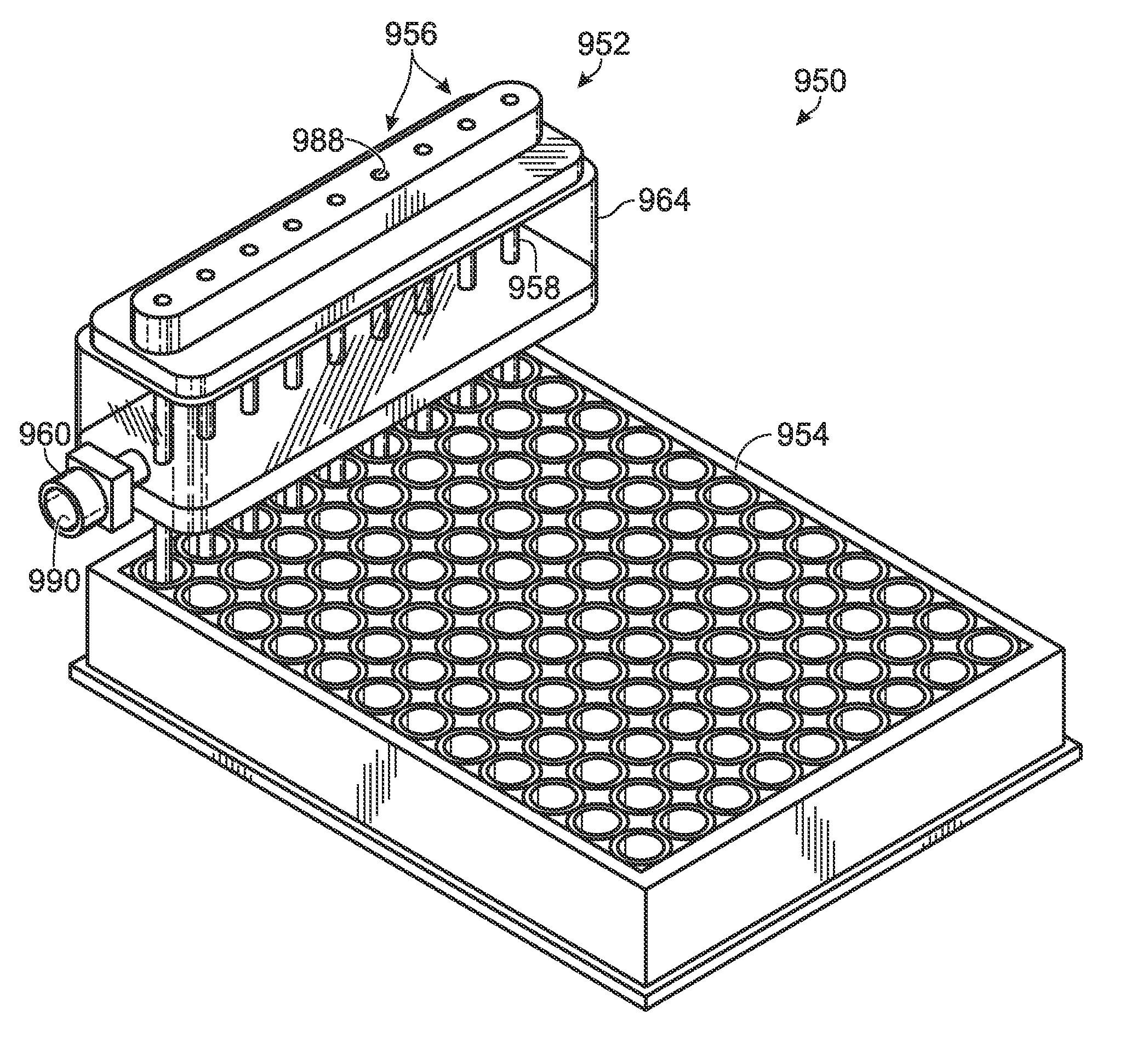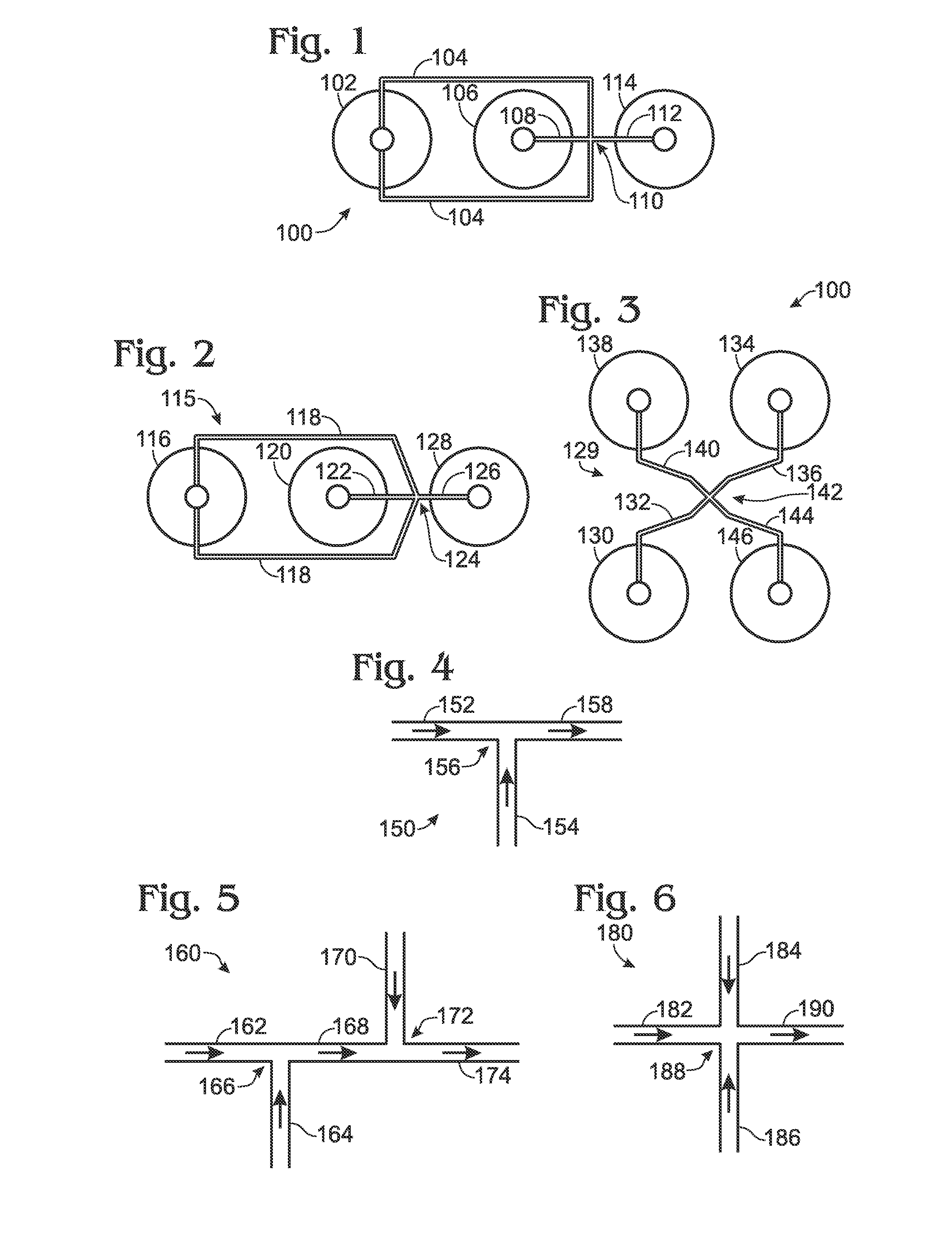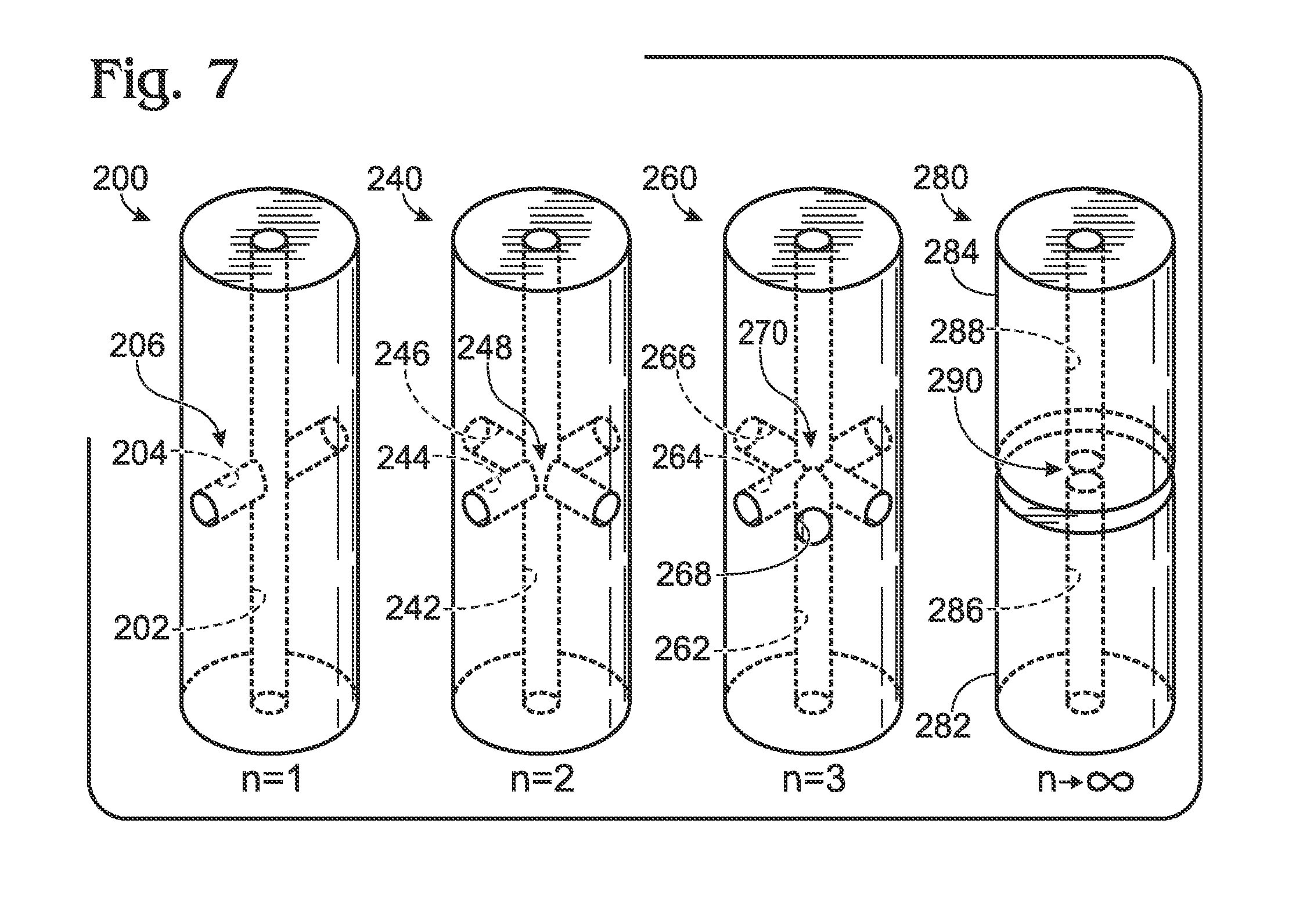Droplet generation for droplet-based assays
a technology of droplet-based assays and droplets, which is applied in the field of droplet-based assay generation, can solve the problems of increasing cost, increasing complexity of instrumentation, and emulsion-based assays presenting technical challenges for high-throughput testing
- Summary
- Abstract
- Description
- Claims
- Application Information
AI Technical Summary
Benefits of technology
Problems solved by technology
Method used
Image
Examples
Embodiment Construction
[0063]The present disclosure provides systems, including apparatus and methods, for generating droplets suitable for droplet-based assays. Droplet generation systems according to the present teachings may be part of an overall assay system configured to test for the presence of one or more target molecules in a sample. These overall systems may include methods and apparatus for (A) preparing a sample, such as a clinical or environmental sample, for analysis, (B) separating components of the samples by partitioning them into droplets or other partitions, each containing only about one component (such as a single copy of a nucleic acid target or other analyte of interest), (C) amplifying or otherwise reacting the components within the droplets, (D) detecting the amplified or reacted components, or characteristics thereof, and / or (E) analyzing the resulting data. In this way, complex samples may be converted into a plurality of simpler, more easily analyzed samples, with concomitant re...
PUM
| Property | Measurement | Unit |
|---|---|---|
| volumes | aaaaa | aaaaa |
| average volume | aaaaa | aaaaa |
| diameter | aaaaa | aaaaa |
Abstract
Description
Claims
Application Information
 Login to View More
Login to View More - R&D
- Intellectual Property
- Life Sciences
- Materials
- Tech Scout
- Unparalleled Data Quality
- Higher Quality Content
- 60% Fewer Hallucinations
Browse by: Latest US Patents, China's latest patents, Technical Efficacy Thesaurus, Application Domain, Technology Topic, Popular Technical Reports.
© 2025 PatSnap. All rights reserved.Legal|Privacy policy|Modern Slavery Act Transparency Statement|Sitemap|About US| Contact US: help@patsnap.com



